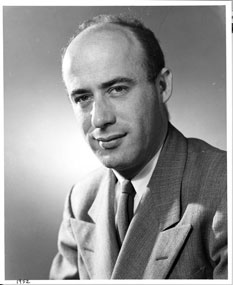John Gofman, PhD, MD
1918 — 2007

Jack Gofman was a pioneer in CVD prevention research because he identified the blood lipoprotein subfractions of differing densities, explored their distribution in normals, diabetics, and coronary patients, postulated their different functional roles, and initiated a major cohort study establishing their predictive power.
Gofman was educated at Oberlin, Case Western Medical College, and the University of California, Berkeley. As a grad student with Glenn Seaborg, the Berkeley chemist who added 10 new elements to the periodic table, Gofman discovered the fissionable nature of uranium 233 in the early 1940s and isolated enough plutonium for J. Robert Oppenheimer to pursue its use in explosives. After the bomb dropped, he became an activist on the health consequences of exposure to ionizing radiation and spent much of his life studying health effects and recommending exposure standards. He founded in 1971 the Committee for Nuclear Responsibility that promoted the view there is no safe level of exposure.
Charles Weiner, professor emeritus of the history of science at the Massachusetts Institute of Technology explained that what was resented about Gofman in the atomic energy field was that the consequences of his research threatened programs to develop nuclear explosives and promote nuclear power. Gofman always felt the need to discuss in public opposing or alternative views on major issues, particularly those affecting public safety. He was pleased whenever efforts were made in medicine to reduce unnecessarily high X-ray doses from CT scans and fluoroscopy. Gofman continued to protest, calling a plan for peaceful use of nuclear bombs – a program dubbed Project Plowshare – “biological insanity.” In response, one of Plowshare’s advocates, physicist Edward Teller, termed Gofman “the enemy within” the Livermore lab.
His early anti-nuclear activism led to his losing research support from the Atomic Energy Commission, which led him, in turn, to complete his interrupted medical education, after which he used his familiar separation and analytical ultracentrifuges in the Donner Laboratory to identify the blood lipoproteins. Those studies led to our present understanding of their role in the causes, treatment and prevention of atherosclerosis. But Gofman’s prescient findings had to be rediscovered some 20 years later after a commission determined that his fractions were not statistically more powerful than simple total blood cholesterol levels in predicting coronary risk.
Gofman was usually right and decades ahead of his time in his ideas and interpretations of risk, whether from radiation or dyslipidemia. (HB)
Sources
Interviews with Henry Blackburn and from the UC Berkeley Media Services
Related Content
Audio Clips
- Framingham Joins the Study
- Felix Moore: Arbiter and Critic
- A Midstream Method Change
- On George Mann
- Mary Lasker Opens Doors